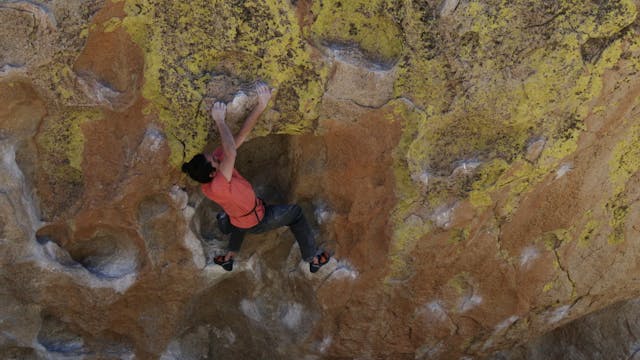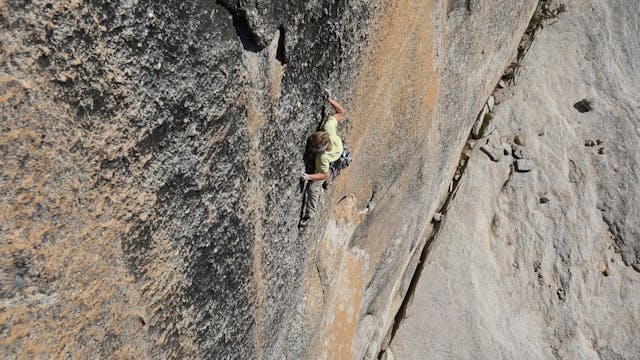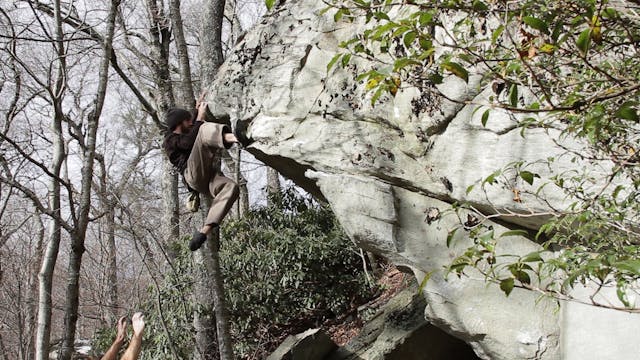Climbing Movement: 12. Sequencing
Climbing Movement
•
1m 53s
“Sequencing” involves envisioning potential combinations of moves for hands and feet, as well body positioning.
Visualizing yourself making the moves helps improve your chances for success. From there, one takes the pre-rehearsed movements in their head, and attempts them on the wall.
When deciphering your sequence, it is important to consider the difficult sections, known as the “crux”.
We do this by analyzing:
1. The direction of pull
2. The hands and feet
3. Body positioning
Try to progress through the moves as fluidly as possible. You will also need to make slight changes on the fly, meaning, the sequence you had planned on the ground will probably differ slightly from the true execution of the actual movement that unlocks a climbing problem. That is part of the fun!
Sometimes planning the sequence is like playing chess. You must think a few moves ahead (to your end goal, such as a rest jug), and then work backwards in your mind to your current location.
Planning the sequences ahead of time (from the ground) saves energy, and increases your chances for the “On Sight”. This means a successful climb the first time, without falling.
Hopefully this also helps you successfully crush more routes in a single day!
We hope you found this video helpful. Feel free to comment below with questions or thoughts!
Please remember, climbing is inherently dangerous. Climb at your own risk.
Up Next in Climbing Movement
-
Climbing Movement: 13. Breathing
Being aware of your breath is critical for climbers. We don’t mean fresh breath; we mean proper breathing.
Calm, regular breathing is key to helping muscles remain oxygenated and ready for use.
A great way to be aware of your breath is to exhale out the mouth, in an audible manner. If you ...
-
Climbing Movement: 14. Posturing
“Posture” or the act of “posturing” is the term we use for the most basic and efficient body position you can place yourself in for climbing.
Keep in mind that you will never be at rest when climbing, so it is ideal to only use the energy necessary for that particular climbing move.
When p...
-
Climbing Movement: 15. Body Tension
Maintaining body tension helps a climber minimize unnecessary movement or swinging.
A loss in body tension between hand and footholds often results in undesired swings away from the wall. This greatly increases your chances of falling.
Maintaining body tension between hand and footholds g...


